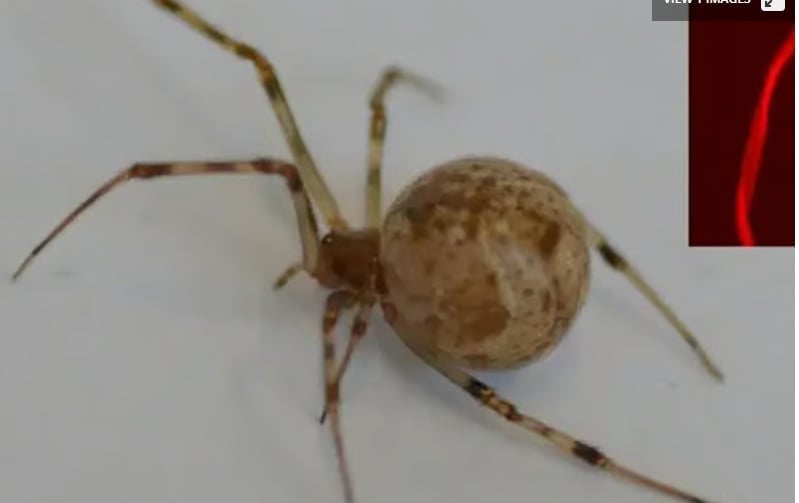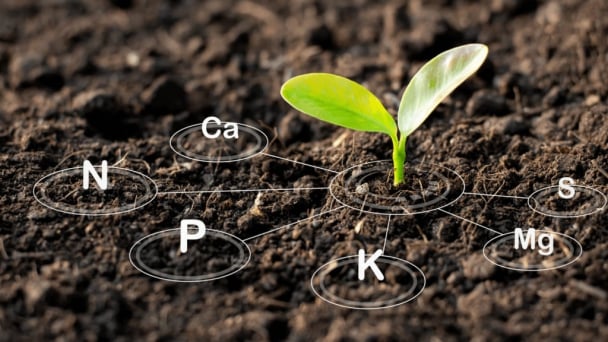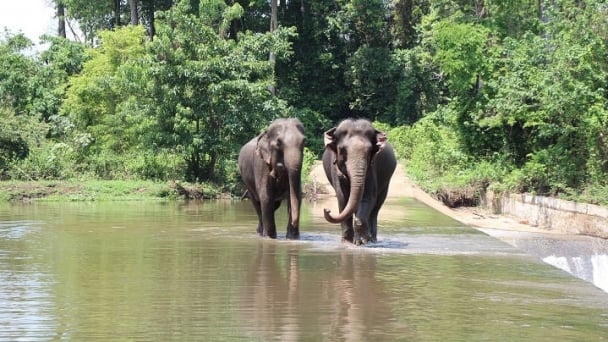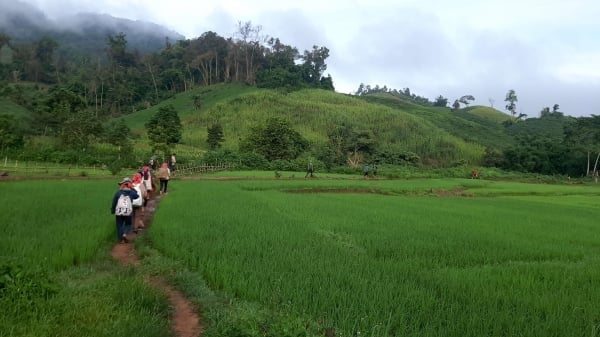May 20, 2025 | 10:33 GMT +7
May 20, 2025 | 10:33 GMT +7
Hotline: 0913.378.918
May 20, 2025 | 10:33 GMT +7
Hotline: 0913.378.918

A red silk gene was added to the spider's genome resulting in it producing a fluorescent colored silk.
With its incredible efficiency, this molecular tool has been applied to plants, animals, and even bacteria. But until now, no one has used CRISPR-Cas9 on spiders.
Researchers at the University of Bayreuth have recently successfully bred the world’s first CRISPR-Cas9-modified spider to produce red fluorescent silk. For this work, they used a species of common house spider (Parasteatoda tepidariorum).
Since many spiders are cannibalistic, with a diverse and complex genome architecture, genetic manipulation and nurturing the resulting offspring poses significant challenges. These factors have left them underrepresented in laboratory research. To overcome these hurdles, the researchers developed a novel CRISPR solution containing the gene sequence for a red fluorescent silk protein and injected it into unfertilized spider eggs.
The microinjection process was no easy task. It involved anesthetizing the spiders with CO2 to prevent movement during the procedure. After recovery, the females were mated with males of the same species. The offspring spun silk infused with a red fluorescent protein, proof that the gene edits had taken hold without altering the silk assembly.
“We have demonstrated, for the first time worldwide, that CRISPR-Cas9 can be used to incorporate a desired sequence into spider silk proteins, thereby enabling the functionalisation of these silk fibres,” says Professor Dr. Thomas Scheibel, senior author on the study.
Spider silk is a fascinating natural fiber, known for its extreme tear resistance, elasticity, light weight, and biodegradability. This successful experiment could open the door to enhanced silk functionalities, expanding its potential in materials science and biotechnology.
“The ability to apply CRISPR gene-editing to spider silk is very promising for materials science research – for example, it could be used to further increase the already high tensile strength of spider silk,” says Scheibel.
Additionally, this study wasn’t focused on weaving colored webs alone. The team also experimented with a process known as CRISPR-KO. Here, the researchers tested the effect of their modifications by "knocking out", or silencing, a gene called "so."
That specific gene was believed to be critical for eye development in spiders, and through the CRISPR-KO process the researchers confirmed this hypothesis. Blocking the so gene led to spiders with no eyes. This offered an advancement in the genetic understanding of this under-studied creature by confirming the role of the gene in the arachnid’s eye formation.
The study has been published in the journal Angewandte Chemie International Edition.
newatlas

(VAN) Vietnam aims to become a 'leader' in the region in the capacity and managing effectively soil health and crop nutrition.
![Reducing emissions from rice fields: [Part 1] Farming clean rice together](https://t.ex-cdn.com/nongnghiepmoitruong.vn/608w/files/news/2025/05/05/z6509661417740_a647202949c539012a959e841c03e1d3-nongnghiep-143611.jpg)
(VAN) Growing clean rice helps reduce environmental pollution while increasing income, allowing farmers to feel secure in production and remain committed to their fields for the long term.
/2025/05/19/5136-1-144800_230.jpg)
(VAN) The Nghe An Provincial People's Committee has just approved the list of beneficiaries eligible for revenue from the Emission Reductions Payment Agreement (ERPA) in the North Central region for the year 2025.

(VAN) 14 out of 35 domesticated elephants in Dak Lak province have had their living conditions improved, with 11 of them currently participating in the non-riding elephant tourism model.

(VAN) Muong Nhe Nature Reserve hopes that being upgraded to a national park will lay the foundation for forest protection efforts to be carried out in a systematic, modern, and sustainable manner.
/2025/05/16/3923-2-171845_52.jpg)
(VAN) Lower costs, higher yields, and improved soil quality are outstanding benefits that soybeans bring when integrated into the crop rotation system.